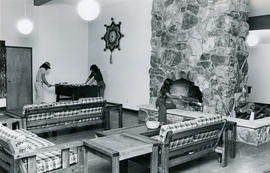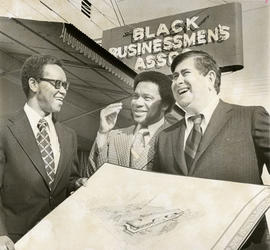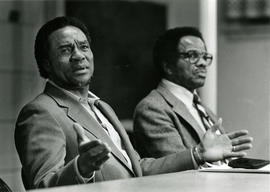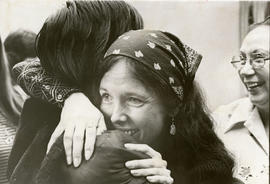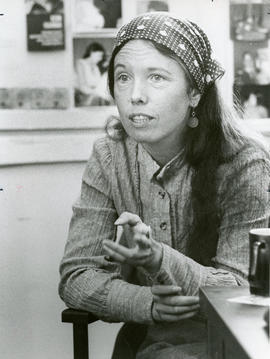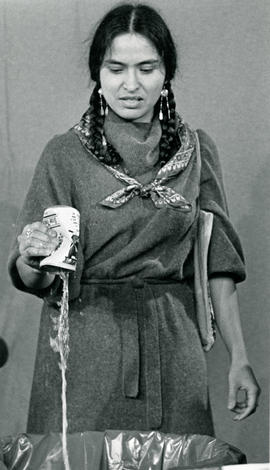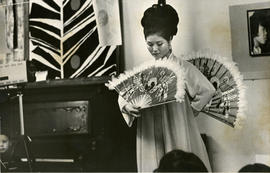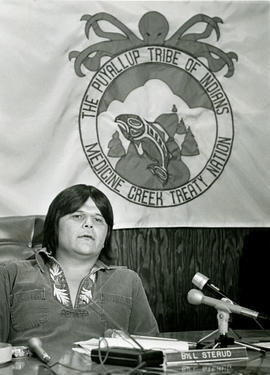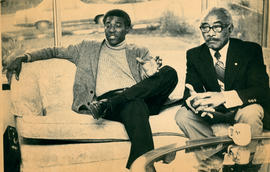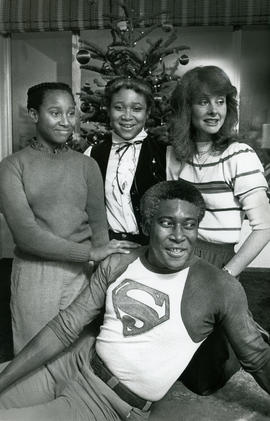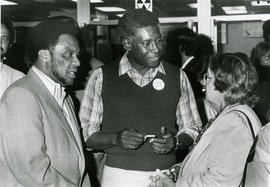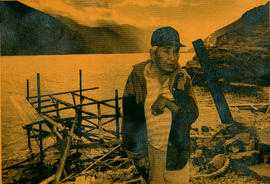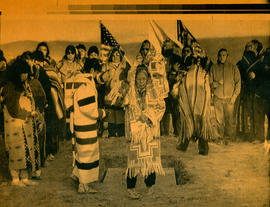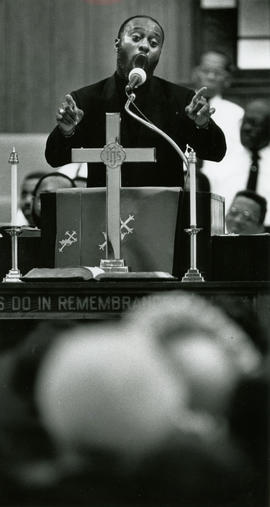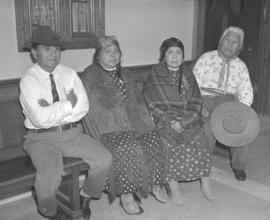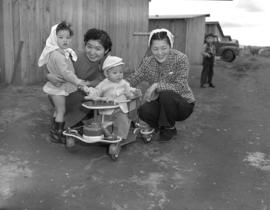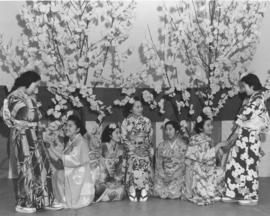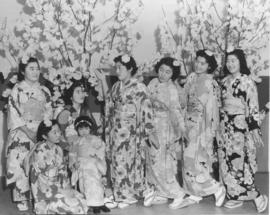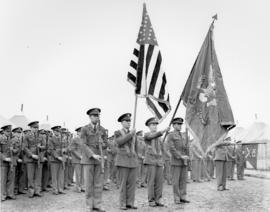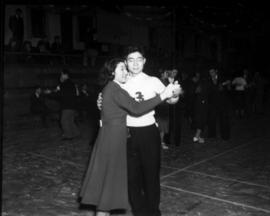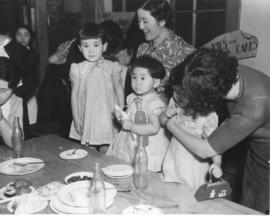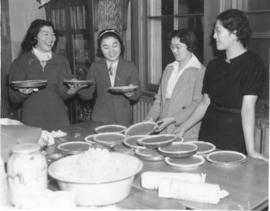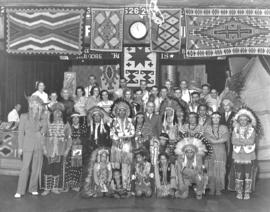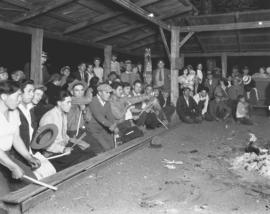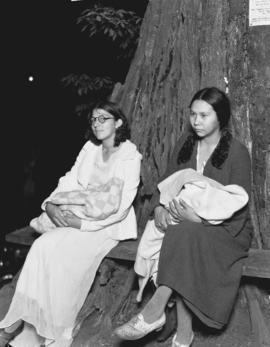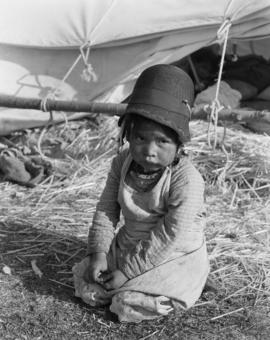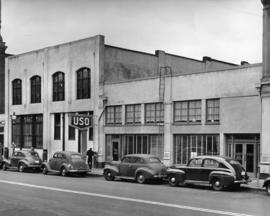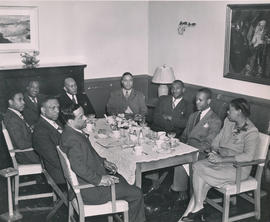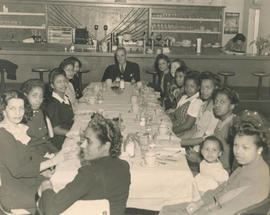By the end of May of 1942, more than 7,000 people of Japanese ancestry from Seattle and the surrounding area, including 1200 from Tacoma, were being detained at "Camp Harmony," a temporary assembly center built hastily by the army in Puyallup. They stayed there for four months, until they were shipped to the Minidoka Relocation Center in Southern Idaho to wait for the end of the war. In this photograph taken May 16, 1942, Seattleites Beverly Higashida (2 years old), Lillian Fujihara, seven month old Wayne Kaniko and his mother Mrs. M. Kaniko all smiled for the camera. Whole families were sent to the camp, each assigned a one room "apartment." The Japanese proceeded to make a home out of the almost unbearable conditions, forming a government, school and devising entertainments. Their values remained intact and their spirits high. (T. Times 4/30/1942, pg. 9)
Camp Harmony (Puyallup); Relocation camps--Puyallup; World War, 1939-1945--Relocation camps; Japanese Americans--Evacuation & relocation, 1942-1945; Children riding bicycles & tricycles; Fujihara, Lillian; Higashida, Beverly; Kaniko, Wayne;
